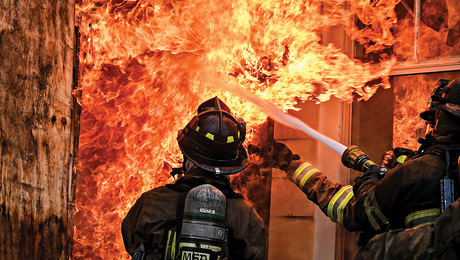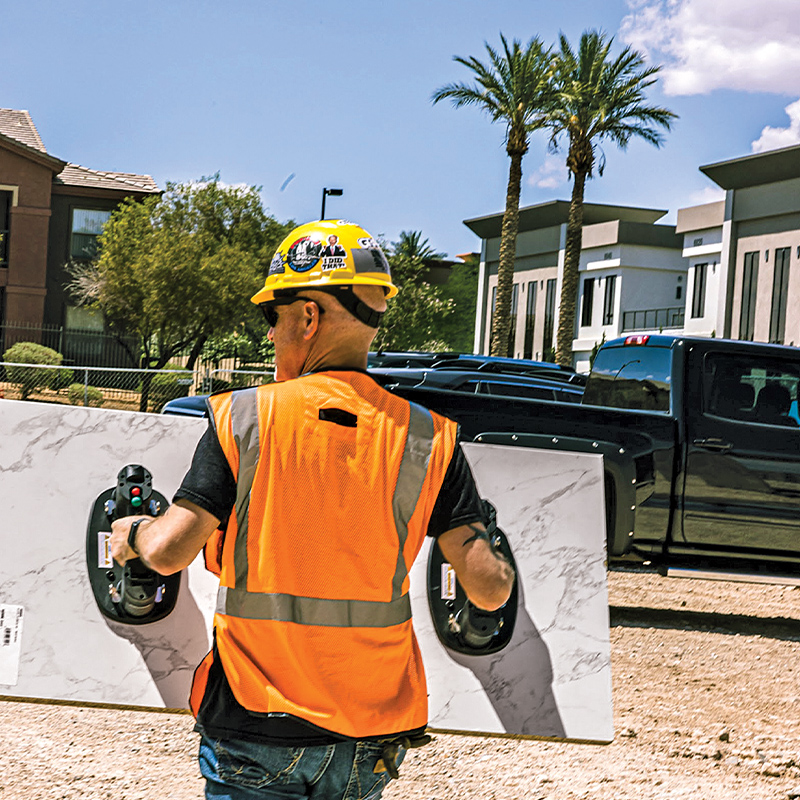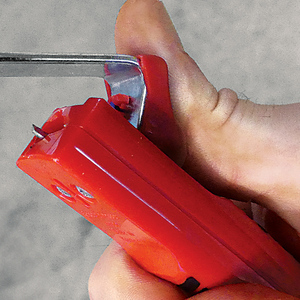I recently moved into a newly constructed brick home. I have a masonry chimney with asphalt shingles and a hip roof. I am having trouble with a leak around my chimney and I want to ensure that my builder gets it right this time. The first time he blamed it on the cricket sheathing and “fixed” that problem. Well it still leaks. I had the opportunity to inspect it yesterday and it doesn’t appear that the flashing is installed correctly. The flashing has not been tucked into the mortar joints and is merely glued on with what appears to be a silicone caulk. On other areas of the house the flashing has been tucked in a saw kerf and the same goop applied at the seams. My questions are:
1. What is the proper way to flash a chimney?
2. Does the flashing have to be tucked in the mortar joint or is it acceptable to just cut a kerf in the brick and tuck it in there?
3. What should be used to seal the top edge of aluminum flashing?
Thanks,
Tom



















Replies
Does the flashing have to be tucked in the mortar joint or is it acceptable to just cut a kerf in the brick and tuck it in there?
Either way is acceptable if done right. I don't like the kerf method on a residence. To my eye it is more of a commercial type flashing.
What should be used to seal the top edge of aluminum flashing?
I prefer to not use aluminum for anything except to drink beer out of and then I prefer glass. But, to answer your question, the flashing should be mortared in or a high quality caulk (Geocel 2300 is my preference) used.
Do you have a full masonry chimney or is it a chase veneered with brick?
I invented brick and brack.
Sounds like the step flashing is caulked to the face of the brick.
Could'nt he saw cut a riglet ithe bed mortar joints and add the counter (cap) flashing over the step flashing? Depending on roof and or cricket pitch it will step up every two or three courses.
Believe you gave a real good dessertaion on how to brake, fit and secure this type flashing a few years ago. IIRC I was impressed with your method over mine b/c it reduced the "oil canning" affect I use to get in some of my work.
Time to hold class agian :)
Dave
Greencu,
Thanks for the response. To answer your question it is a veneered chase. The builder was out there yesterday and he is blaming it on the brick being porous. I still believe that it is the flashing so I am going to try and post a picture of it in the near future
Thanks again,
Tom
If it's a brick chase, at least one side has brick setting on a steel lintel. This needs to be thru flashed. All brick is pourous. Measures have to be taken to keep their porosity (is that a word?) from allowing water toenter the structure.
I invented porosity.
i've noticed in traveling that a lot of different materials are used on chimneys..
here in New England the material of choice would typically be lead... or on stone chimneys and on high end work.. it would be copper or lead coat..
as you get further south and west the material of choice tends to aluminum... and not very pretty, either.... usually one piece for each side instead of the traditional step up the courses....
some parts of the country used to use galv. sheet or painted steel before aluminum became available..
in all parts , of course, copper or lead coat copper is the signature of high end work
the flash is usually let in when the chimney is laid up.. but on rework we cut in new reglets with a 4" or 5" grinder or cutoff wheel..
we may pour a proper cap at the same time.. as most caps are cracked since they were never formed , but rather just a large dollop of concrete poured on top of the birck and tapered to nothing at the edges.. since concrete has no strength in thin sections , it cracks and the chimney leaks
if you have a stone chioney,, you can almost count on the chimney leaking unless it is thru-flashed to the flue tilesMike Smith Rhode Island : Design / Build / Repair / Restore
About a year ago, I had the big production oriented residential roofing company in this area call me wanting to sub me to do their flashing. We agreed on price, but they wanted me to use terne II rather than copper ( i was providing materials ) so they could do a big up charge to copper. It was going to cost me more to do the terne flashing (since I had to paint it) than copper. The deal fell through. Anyway, we seldom see aluminum, occasionally lead, occaisonally LCC, lots of rusty terne, and way too many mammy messes. Almost all flashing installed around here in the last 5-6 years is bright, shiney, 16 oz copper.
Oh, did you look at that LULL/JLG telehandler/boom?
looked at the lull, the skytrack... and the IR.. gave all my research to my friend
i'll post some of the results in the photo section later .. look for something called
"framing for curves"Mike Smith Rhode Island : Design / Build / Repair / Restore
Aluminum is a poor choice for masonry contact.
This site has some good diagrams:
http://www.copper.org/applications/architecture/arch_dhb/fc/fc_st_chmny.html
"3. What should be used to seal the top edge of aluminum flashing?"
There shouldn't be an "top edge" to seal.
The copper web site shows a "cap" flashing that is let in the mortar with covers the step flashing. I have alway heard that called counter flashing.
There shouldn't be an "top edge" to seal.
I think there is a counter flashing in this case. It's cut into a kerf cut thru the brick and mortar parallel to the roof (or at least that's my understanding) rather than individual flags for each course of brick. I'm assuming he want's to know what to seal the metal to kerf joint with. I could be wrong, just ask my wife.
I invented kerfing. I'm a kerfer dude.
Bill,
The flashing does consist of step and counterflashing. I was concerned about how to seal the top edge of the counterflashing, because I was thinking that it should tucked in a mortar joint and repointed.
Thanks,
Tom